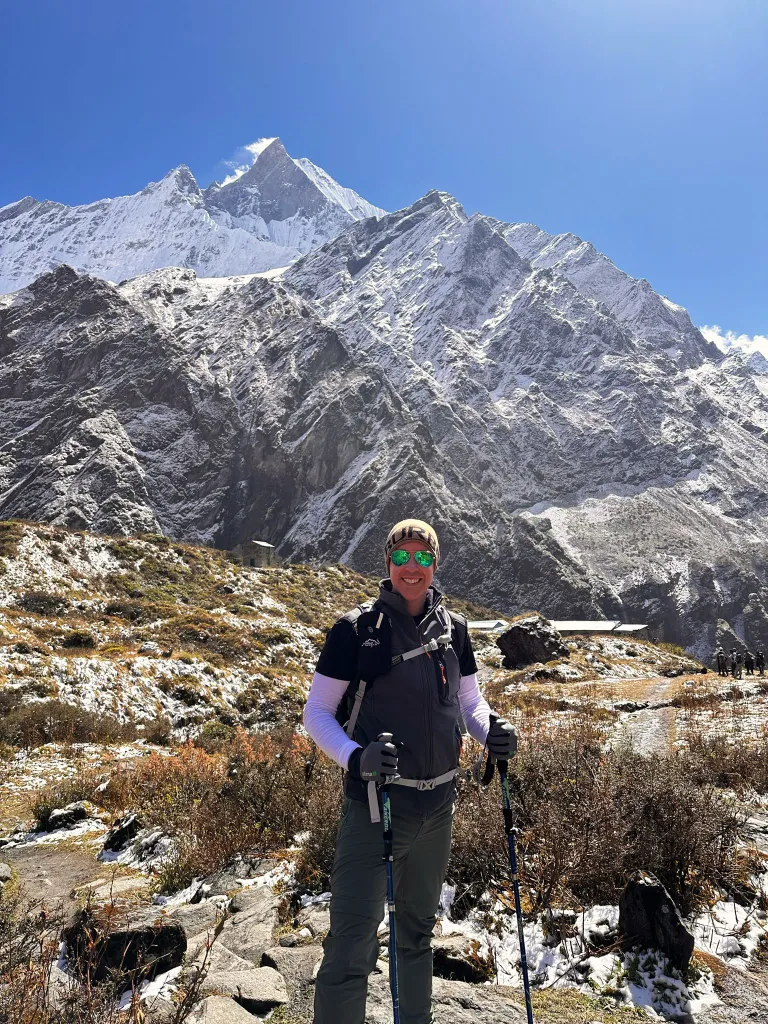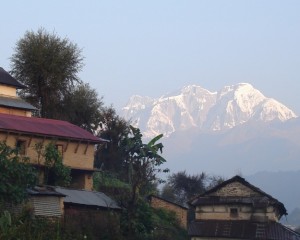Best Time to do Muldai View Trek
Are you looking for something new and a short-time-frame experience of a good trek with an alluring adventure? Then, it's time for you to know about the Muldai View Trek.
Located in the arms of the Annapurna range, the Muldai View Trek offers one of the most scenic trekking experiences. The constant cheering of Annapurna, Dhaulagiri, Machapuchare, and many more gems accompanies the trail, which also passes through magnificent flora and fauna, which provides delightful company on your journey.
However, it is essential to choose the right time for the Muldai View Trek. Let's clarify the different seasons so you can find the best time to embark on this beautiful trekking journey.
Overview of the Muldai Trek
The Muldai View Point Trek is a newly introduced trekking package in the Annapurna region of Nepal. It is a short and easy trek that offers panoramic views of the Annapurna, Dhaulagiri, and other Himalayan ranges.
The Muldai viewpoint lies at an elevation of 3637m inside the Annapurna Conservation Area, the first and largest conservation-protected area in Nepal. Besides, the trek route combines the popular Ghorepani and Ghandruk trails and takes you to the Muldai viewpoint for a 360-degree view of the surrounding mountains.
Key highlights of the Muldai Trek include:
- Breathtaking views of Annapurna, Dhaulagiri, Machhapuchhre (Fishtail), Lamjung, and other peaks
- Excellent spot for sunrise, sunset, and stargazing
- Opportunity to explore the picturesque Ghandruk village, listed as one of Asia's most beautiful towns by CNN
- Trekking through lush rhododendron forests and traditional Gurung and Magar villages
- Untrodden path experience with fewer crowds compared to other popular treks

Best Time to Visit The Muldai View Trek
Nepal experiences four main seasons, spring and autumn being considered among the best for trekking. This is the best time to experience the views with comfortable weather and dry trail conditions. Furthermore, each season has its own charm in the area, making your trekking experience even more beautiful.
Spring
In spring, following the enchanting tranquility of winter, the landscape transforms with lush greenery. This season marks a vibrant blooming period that adorns the trails with diverse flora and enhances the charm of the surroundings.
The clear skies during spring offer majestic views of the mountains by day and a mesmerizing stargazing experience by night gives a magical atmosphere. Trails remain in excellent condition, dry for ease and enjoyment for trekkers.
Daytime temperatures are mild and pleasant ranging from 10°C to 25°C while nights are cooler yet comfortable, ranging from 0°C to 10°C.
Spring is generally less crowded compared to autumn. However, towards the end of the season, the onset of the monsoon can occasionally obstruct the trails.
Autumn
Autumn brings a picturesque transformation as the forests shift to shades of golden and red with a stunning landscape enhanced by post-monsoon freshness. Known for its crystal-clear skies, this season offers unparalleled visibility of the majestic mountains with breathtaking sunsets and sunrises.
The trails are maintained and dry, providing optimal conditions for trekking. Daytime temperatures are pleasant and stable, ranging from 5°C to 15°C, while nights are cooler, ranging from -4°C to 6°C.
One of the highlights of autumn is the cultural richness brought by festivals like Dashain, Tihar, and Lhosar a unique cultural experience of the region. However, it's important to note that autumn is one of the busiest times of the year for trekking in this region. To avoid crowds, it's advisable to plan your trek either at the beginning or towards the end of the season.
Factors to consider when choosing the best time.

Tips to Make Your Muldai Trek Sucessful
- Plan Ahead: Research the trek thoroughly, including weather conditions, trail maps, and required permits.
- Choose the Right Season: Opt for spring or autumn for the best weather and clearest views. Consider your preference for crowd levels as well.
- Pack Wisely: Pack light but include essentials such as sturdy trekking shoes, appropriate clothing layers, sunscreen, and a first aid kit.
- Stay Hydrated and Nourished: Carry enough water and snacks to keep your energy levels up throughout the trek.
- Acclimatize Properly: Take your time to acclimatize to the altitude, especially if you're not used to trekking at higher elevations.
- Respect Local Culture: Be mindful of local customs and traditions. Respect wildlife and natural habitats along the trail.
To wrap up, The Muldai View Point Trek in the laps of the Annapurna region is an incredible journey through stunning landscapes and majestic mountain views.
Trekking through rhododendron forests and picturesque villages and reach the serene Muldai viewpoint at 3637m. Addiiotnally, it is a peaceful trek with breathtaking scenery in the Annapurna Trekking zone. Contact Nepal Vision Trek for expert guidance and an adventure with the unforgetable memories.

FAQS






